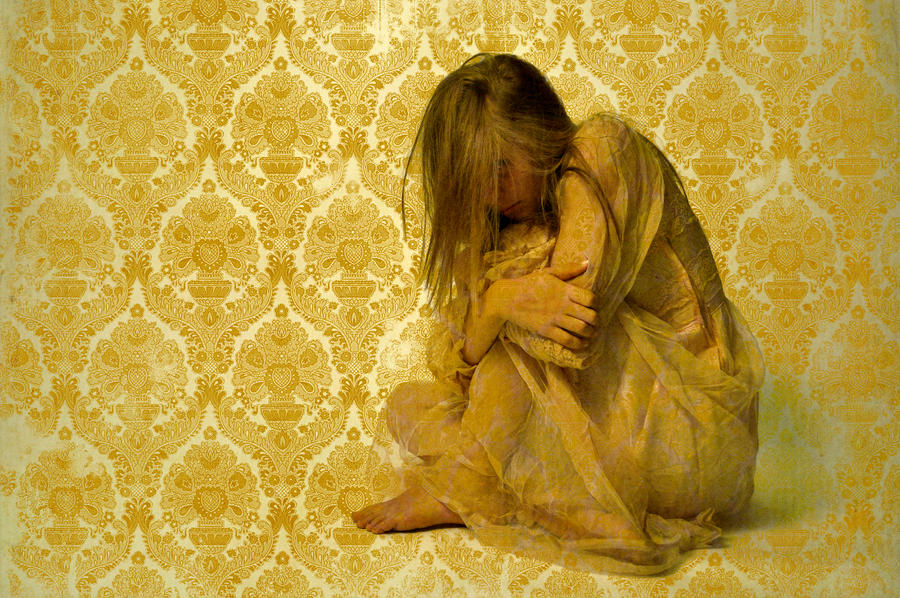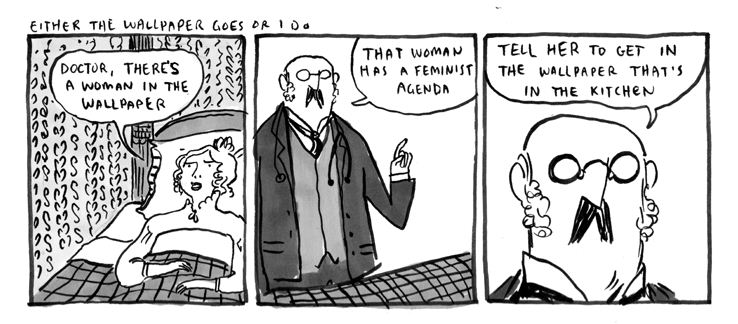
Author: Charlotte Perkins
Collected In: The Yellow Wallpaper And Other Stories
Anthologised In: many anthologies, including The Dark Descent
I never saw so much expression in an inanimate thing before
Like many people (especially in the US I think) I studied this at school. It was public domain even back then, so the teacher knocked up some special copies for us - bloody self-publishers. We were told it was a classic piece of feminist literature (true); an expert expression of repression and madness (true); an ironic reversal of The Doll's House (true). What we weren't told is that it was a horror story.
I would have attributed this to the fussy, genre-phobic syllabus of English GCSE circa the mid-Nineties, if it wasn't for one thing: in doing some reading up on this story in preparation to write this piece (I do do preparation, despite any appearances to the contrary) I've encountered the same attitude. This isn't a horror story - no sir. No mere horror story; how can it be when it is a classic feminist examination of repression and male attitudes to female emotion?
I'm not quite sure I understand the argument, the either/or attitude. I guess there's still a viewpoint that some people have that calling something a piece of horror literature cheapens it somehow; somehow makes it have less of a serious point? But regardless of what some people think it is a horror story, as well as (not instead of) what they think it is.
As an example, consider these lines from the opening, describing the house the couple are moving into:
There is something queer about it... Else why should it be let so cheaply?
This is shortly after using the word haunted in connection to the house as well. It's not just a horror story opening, it's a classic, almost cliched horror story opening. One feels Shirley Jackson and Richard Matheson were reading closely.
Then there's the narrator's obsessive description of the titular wallpaper itself: repellent; flamboyant; unclean; strangely faded; stripped off in great patterns and of the pattern in the wallpaper design: slanting waves of optic horror.
Hardly a world away from Lovecraft, is it?
Regardless, when I say it's one of the best 'strange stories' I've read, I'm certainly not intending it as a criticism or intended to dilute its feminist 'message' (for want of a better word). In fact that's partly why it's such a great horror story.
(I found loads of great images based on the story when looking for one for this piece - too many to chose from. Here's some more).
 |
| from an 1989 installation, "The Yellow Wallpaper" by artist Marlene Angeja. |
 |
From here |
 |
| By Kate Beaton |
Next Week: Strange Stories #9. Tell Me I'll See You Again by Dennis Etchison